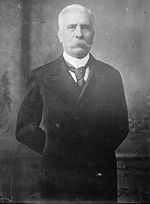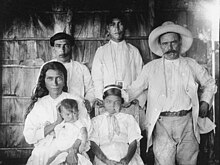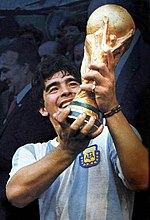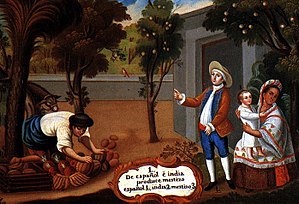Half Blood
Mestizo was a racial classification applied by the Spanish Empire in America from the XVI century , to name one of the "castes" or "crosses", resulting from the sexual relationship between a person classified as a "white race" with another person classified as an "Indian race".
Although it is a much-discussed term today, the term mestizo is commonly used to describe people descended from ancestors belonging to two or more ethnic groups. Although originally used to describe the descendants of white-European and Native American parents, the term is now used to refer to people with ancestors belonging to different cultures, often with racist significance.
The Spanish colonial caste system derived from the medieval doctrine of clean-blood statutes. People classified as mestizos had a diminished social status, which prevented or limited their access to education and positions of command, property, or prestige.
With Spanish-American independence, the new states that emerged in the XIX century, abolished the «prerogatives of blood and birth», establishing equality before the law.
After independence, the term was retained to refer to people or cultures that descend from Native Americans and Spanish.
The term comes from the Latin mixticius (mixture or mixed) and has been involved in the controversy of the human races, which part of current scientists deny, or try to replace by ethnic groups. In a broader sense, the term miscegenation is also used to identify human beings who have ancestors belonging to different ethnic groups or cultures, giving rise to a new culture.
Mestizophilia
Mestizophilia can be defined as the idea that the phenomenon of miscegenation is a desirable fact. According to Agustín Basave, the mestizophile current is inscribed in nationalism, in that process through which a nation or a group of people they feel part of the same nationality, with an emphasis on language, race, religion or traditions.
In the case of Mexico, racial interbreeding proliferated illegitimately and the children of Spaniards and indigenous people were discriminated against; Miscegenation and bastardy became synonymous. The Church favored marriage between Spaniards and baptized indigenous people and Cardinal Jiménez de Cisneros, Regent of Castile, recommended that the Spaniards take as wives the heiresses of the indigenous caciques, seeing in the future mestizo a instrument of political control over the colonies.
The racial melding continued, yet the parties involved were divided and estranged. In 1834, the priests Carlos Tepisteco and Epigmenio de la Piedra proclaimed the mestizo monarchy plan, through which a constituent congress made up of the 12 young men closest to Moctezuma's descendants would elect an emperor who, if he were Indian i>, he should marry a white woman, and if he is white, with a pure Indian.
In 1849, Dr. Mora, who in 1836 decreed the mental expatriation of colored Mexicans, advised the government on the need to make the caste uprisings cease, and that henceforth they would be impossible; the only way to achieve this was the fusion of all the races and skin colors that existed, into one.
America
Hispanic America
The Spanish conquistador had an average age of 25 years, and understood his mission in America as an extension of the Spanish reconquest. Spanish women who emigrated to America were in a lower proportion, between one for every 9 or 8 men. The miscegenation in this continent arose, therefore, contemporary with the arrival of the Europeans in America. In general, monogamous relationships prevailed, as a Spanish cultural extension, but with descendants subject to legitimization by the crown, which was generally granted. In fact, most of the descendants of the Spanish conquistadors in the first half of the 16th century were mestizos, a figure that could reach more than 65% of lower-ranking Spaniards.
In South America, the Peruvian writer Inca Garcilaso de la Vega, was the son of the Spanish conquistador Sebastián Garcilaso de la Vega and the Inca princess Isabel Chimpu Ocllo, he called himself a mestizo. He is considered the "first biological and spiritual mestizo of America." He lived in the town of Montilla, Andalusia, where he died in 1616.
After the period of conquest, the Spanish crown tried to discourage miscegenation, and established a caste system, similar to what was done in the peninsula with the doctrine of "clean blood" to limit privileges, in such a way that a individual who belonged to different "races", had mixed blood, forming part of a caste, a fact that in turn affected their rights. However, indisputably, the caste system was never impermeable, to such an extent that the set of "castes" always exceeded the number of whites. White men were those who mixed with Indian, mestizo, black, and mulatto women in casual unions, generally in master-slave or master-servant relationships.
However, the Spanish crown at that time prohibited sexual relations between a white woman and an Amerindian or African man. If this happened, male Amerindians and Africans were sentenced to death, under the simple pretext of considering rape or sexual abuse. Despite these restricted laws imposed by the crown, some white or European women clandestinely also had sexual relations with Amerindian and African men. White women who mixed secretly with Indian, mestizo, black, and mulatto men belonged to the lower and lower middle class.
Caste interests were created, in such a way that some were prohibited from carrying arms, or from being caciques or protectors of Indians, notaries, corregidores and mayors, from becoming a soldier, obtaining university degrees and accessing religious orders, except in the case that they demonstrate their necessary condition. The problem would have been insignificant if miscegenation had been low, but it turned out that generation after generation the castes could not identify themselves, losing the intended social role function.
The term "mestizo" is currently more uncertain, and is applied to people who share European and Amerindian or African ancestry, whatever the proportions, attributing different meanings depending on the local culture.
In countries with indigenous majorities, such as Guatemala and Bolivia, the term «mestizo» has not lost its cultural meaning, for example, in some cases it is considered «indigenous» only if that person lives and maintains the traditional way of life (clothing, customs and indigenous languages), otherwise, he is considered "mestizo". In addition, most of the small Afro-American minority would also identify simply as "mestizo," rather than black, mulatto, or zambo, more by virtue of their cultural traits than their racial ancestry. These cultural implications of "mestizo" may lead to an overestimation of the mestizo population that would otherwise not be mestizo in a racial sense, but specifically, indigenous or African. Additionally, the Mexican census does not record race, so any calculations made by government bodies or independent agencies are always estimates.[citation required]
United States
“Mixed Bloods”
In the United States, the word "mestizo" is used to designate Mexicans and Central Americans, as well as Hispanic Americans of that descent.
Of the Mexican-Americans who lived in the Southwestern United States for several generations prior to the annexation and incorporation of that region into the United States—formerly part of Mexico—many identify as "mestizo," particularly those who also identify as Chicanos, among these many Texans.
A contemporary American personality of mixed-blood origin is actor Johnny Depp. Depp is of Cherokee, Irish, French, and German descent. In rock, we can find Eddie Vedder (vocalist of Pearl Jam) who has Cherokee blood, Zack de la Rocha, vocalist of Rage Against the Machine, a mestizo with Mexican ancestry on the father's side and white-American on the mother's side, as well like Anthony Kiedis, lead singer of the Red Hot Chili Peppers, who since its inception has proudly alluded to his Apache ancestry. In the world of sports, there is the boxer Óscar de la Hoya.[citation needed]
Europe
Latin Europe
Not only could the word mestizo be applied to the American continent, with respect to people descended from a mixture between Europeans and indigenous people or Africans. Throughout the European continent, the term mestizo is not applied but white or Caucasian, although its inhabitants within the category of white race have different physical features such as skin, hair and eye color tones. One of them is Latin Europe, made up of countries such as Spain, France, Italy, Portugal, Romania and among others, where within the white category there is a great sub-ethnic diversity descendants of the different Indo-European peoples, who invaded and colonized their territories, settling in the southern Europe and along the shores of the Mediterranean over the centuries. The natives originating from the European continent, such as the Celts, Germans, Romans, Greeks and among other civilizations, mixed with settlers of Semitic origin from the Middle East, such as Arabs, Jews, Phoenicians, Persians, Berbers and even some natives from of India, a similar case occurred with colonization in America. Although the Semites who are also within the category of the white race, the characteristics of the color of the skin, hair and eyes, differs greatly from the physical features of the natives of the European continent.
Asia and Oceania
On the Asian continent, the only countries that are considered mestizo are the Philippines and the Mariana Islands such as Guam and Northern Mariana Islands (former Spanish colonies) and East Timor (former Portuguese colony). Unlike other countries on the continent, which were English and French colonies, the settlers did not mix as much with the indigenous natives as the Spanish and the Portuguese mainly did. Although, the colonial legacy in a good percentage of people of mixed ethnicity in the Philippines, East Timor and the Mariana Islands, is marked in physical features and surnames, as well as culturally.
Contenido relacionado
Soviet Union flag
History of Christianity during the Middle Ages
Act of Independence of the Mexican Empire







